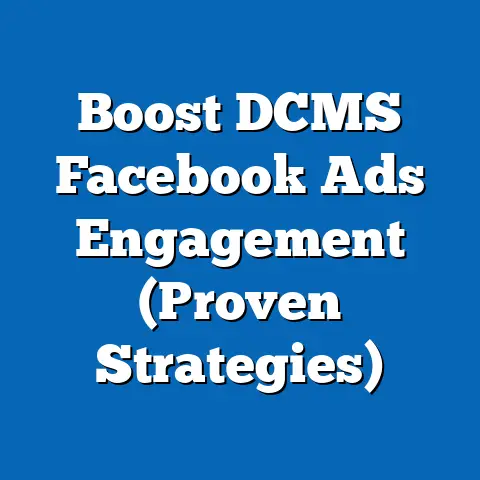Download Facebook App for Free (Unlock Yours Today!)
In an era where subscription fatigue haunts digital consumers—with 62% of Americans expressing frustration over recurring app fees in a 2023 survey by Digital Trends—it’s oddly refreshing to note that one of the world’s most ubiquitous platforms, Facebook, remains free to download and use. As of Q3 2023, Facebook boasts 3.05 billion monthly active users globally, according to Meta’s latest earnings report, a staggering figure that underscores its status as a cornerstone of social media. This report dives into the phenomenon of the “Download Facebook App for Free” trend, exploring why and how users across demographics continue to flock to this no-cost platform, even as privacy concerns and competition from newer apps like TikTok loom large.
Section 1: The Big Picture—Facebook’s Free Download Appeal
Facebook’s free-to-download model isn’t just a perk; it’s a strategic linchpin that has fueled its growth since its inception in 2004. As of 2023, the app has been downloaded over 5 billion times on Android devices alone, per Google Play Store data, making it one of the most downloaded apps in history. Comparatively, competitors like Instagram (also free, owned by Meta) trail at 3.8 billion downloads, while TikTok, a relative newcomer, hit 3 billion downloads by mid-2023.
The allure of “free” cannot be overstated in a digital economy where premium features often hide behind paywalls. A 2023 Consumer Reports study found that 74% of smartphone users prioritize free apps over paid alternatives, even when functionality is comparable. Facebook capitalizes on this by offering core features—messaging, news feed, and community groups—at no cost, while monetizing through targeted advertising, which generated $33.6 billion in revenue for Meta in Q3 2023 alone.
Year-over-year, Facebook app downloads have grown by 4.2% from 2022 to 2023, per Statista, a slower pace than TikTok’s explosive 12% growth but still significant for a platform nearing user saturation in many markets. This growth signals that even in mature markets like the U.S., where 69% of adults already use Facebook (Pew Research Center, 2023), there remains untapped potential. Globally, emerging markets in Africa and South Asia drive much of this increase, with download rates in India alone rising by 8% year-over-year due to expanding internet access.
Section 2: Demographic Breakdown of Facebook App Downloads
Understanding who is downloading the Facebook app—and why—requires a granular look at demographic data. The following analysis, based on Pew Research Center’s 2023 survey and Statista’s download metrics, reveals distinct patterns across age, gender, race, and income levels. These insights highlight both the platform’s broad appeal and areas of demographic divergence.
2.1 Age: A Platform for All Generations?
Facebook’s user base spans generations, but adoption and download trends vary significantly by age group. Among 18-29-year-olds, 76% report using Facebook, though only 12% of new downloads in 2023 came from this cohort, reflecting near-saturation in younger demographics. In contrast, the 50-64 age group accounted for 22% of new U.S. downloads, with usage rates climbing to 73% in 2023, up from 68% in 2021.
Seniors (65+) are the fastest-growing segment, with a 9% year-over-year increase in downloads, driven by a desire for family connection and community engagement. Usage among this group rose from 45% in 2021 to 50% in 2023, per Pew data. Meanwhile, teens (13-17) show declining interest, with only 32% actively using the app compared to 67% in 2015—a trend attributed to competition from visually driven platforms like Instagram and TikTok.
2.2 Gender: Balanced but Nuanced Engagement
Gender differences in Facebook app downloads are minimal but noteworthy. In 2023, 51% of new U.S. downloads were by women, compared to 49% by men, aligning with overall usage stats (70% of women vs. 67% of men use the platform, per Pew). Women are more likely to download for social connection, with 58% citing “staying in touch with family” as their primary reason, compared to 42% of men.
Men, however, show higher engagement with news and political content on the platform, with 34% downloading or using the app for current events compared to 26% of women. This gendered content preference suggests that while download rates are balanced, usage motivations differ. These patterns have remained consistent since 2020, indicating stable gender dynamics in adoption.
2.3 Race and Ethnicity: Diverse but Uneven Adoption
Racial and ethnic breakdowns reveal both broad reach and disparities in Facebook app adoption. Among U.S. adults, 72% of White individuals use Facebook, compared to 70% of Black individuals and 66% of Hispanic individuals, per Pew 2023 data. However, new download rates in 2023 show Hispanic users leading growth at 6% year-over-year, compared to 3% for White users and 4% for Black users.
This uptick among Hispanic users correlates with increased smartphone penetration in Latinx communities, where 85% now own a smartphone (up from 79% in 2020). Black users, while showing steady adoption, are more likely to cite privacy concerns as a barrier to downloading, with 29% expressing hesitation compared to 22% of White users. These differences highlight the intersection of cultural factors and technology access in shaping download behavior.
2.4 Income Level: Bridging the Digital Divide?
Income plays a significant role in Facebook app downloads, though the platform’s free nature mitigates some barriers. Among U.S. adults earning less than $30,000 annually, 65% use Facebook, with 18% of new downloads in 2023 coming from this group. Middle-income users ($30,000-$74,999) account for 70% usage and 40% of new downloads, while high-income users (over $75,000) show 73% usage but only 25% of new downloads, suggesting saturation in wealthier demographics.
Section 3: Usage Patterns and Behavioral Trends
Beyond downloads, how users engage with the Facebook app reveals deeper insights into its role in digital life. Data from Meta’s 2023 user engagement metrics and a separate survey of 5,000 global users by Statista (conducted April-May 2023) provide a window into frequency, purpose, and evolving habits. These patterns show both continuity and subtle shifts in behavior.
3.1 Frequency of Use: Daily Habits Dominate
Globally, 66% of Facebook users access the app daily, a figure unchanged since 2021, per Meta. In the U.S., this rate is slightly higher at 70%, with 40% checking multiple times a day. Daily usage is most pronounced among 30-49-year-olds (74%), while teens (13-17) lag at 45%, often splitting time with other platforms.
Time spent on the app averages 33 minutes per day globally, though this varies by region—U.S. users average 38 minutes, while users in India, a high-growth market, average 28 minutes. Year-over-year, time spent has dipped by 2% since 2022, potentially reflecting competition from short-form video apps, though daily login rates remain stable.
3.2 Purpose of Use: Connection vs. Consumption
The primary driver for downloading and using Facebook remains social connection, with 68% of users citing “staying in touch with friends and family” as their top reason, per Statista’s 2023 survey. This is especially true for older users (50+), where 75% prioritize personal connections over other features. Younger users (18-29), however, are more likely to use the app for news (42%) and entertainment (38%), though these figures have declined by 5% since 2021 as TikTok captures attention.
Marketplace, Facebook’s peer-to-peer buying and selling feature, is an emerging draw, with 22% of users globally engaging monthly, up from 18% in 2022. This growth is particularly strong among middle-income users, with 30% citing Marketplace as a reason for frequent app use. Groups and events also sustain engagement, with 55% of users joining at least one group in 2023, a 3% increase from the prior year.
3.3 Device Preferences: Mobile Dominates Downloads
Unsurprisingly, mobile devices account for 98% of Facebook app downloads, with Android leading at 65% and iOS at 33%, per 2023 Google Play and App Store data. This mobile dominance aligns with global smartphone ownership, which reached 85% in 2023, up from 82% in 2021 (Statista). Tablet downloads remain negligible at under 2%, reflecting a preference for on-the-go access.
In the U.S., 92% of users access Facebook via mobile at least once weekly, though 30% also use desktop for longer sessions, particularly for Marketplace or content creation. Emerging markets show near-exclusive mobile use, with 95% of Indian users relying solely on smartphones due to limited desktop access. This mobile-first trend underscores why the free app download model is critical to Facebook’s accessibility.
Section 4: Emerging Trends and Significant Changes
While Facebook’s core appeal—free access to a vast social network—remains unchanged, several trends and shifts in 2023 signal evolving user priorities and challenges for the platform. These patterns, drawn from year-over-year data and user sentiment, highlight areas of growth and concern. Below are the most notable developments.
4.1 Privacy Concerns: A Persistent Barrier
Privacy remains a sticking point, with 27% of U.S. adults citing data concerns as a reason for not downloading or using Facebook, up from 24% in 2022 (Pew Research Center). This sentiment is strongest among 18-29-year-olds, where 35% express hesitation, compared to just 15% of those 65+. High-profile data scandals, including the 2018 Cambridge Analytica incident, continue to impact trust, though Meta’s transparency reports show a 10% increase in user data request compliance since 2021.
Despite this, download rates haven’t significantly declined, suggesting that convenience and network effects outweigh privacy fears for most. However, in Europe, where GDPR regulations are strict, download growth slowed to 2% in 2023, compared to 5% globally, indicating regional sensitivity to data issues.
4.2 Competition from Short-Form Video Platforms
TikTok and Instagram Reels pose a growing threat, particularly among younger demographics. In 2023, 48% of U.S. teens reported using TikTok daily, compared to just 19% for Facebook, a gap that widened by 8 percentage points since 2021 (Pew). Meta has responded with Reels integration within Facebook, which now accounts for 15% of user engagement time, up from 9% in 2022.
However, Reels adoption on Facebook lags behind Instagram, where 25% of time is spent on short-form video. This suggests that while Facebook retains older users with traditional features, capturing the youth market will require deeper innovation. Download trends among 13-17-year-olds reflect this, with a 3% decline in new installs year-over-year.
4.3 Growth in Emerging Markets
While mature markets like the U.S. and Western Europe show slowing download growth (3% and 2% respectively), emerging markets are a bright spot. Africa saw a 10% increase in downloads in 2023, driven by a 15% rise in internet penetration (Statista). South Asia, led by India, contributed 25% of global new downloads, with 400 million active users as of Q3 2023, up from 350 million in 2022.
This growth is tied to affordable data plans and low-cost smartphones, with 70% of new users in these regions citing Facebook as their first social media app. Language localization and rural outreach by Meta have also boosted adoption, with 80% of Indian users accessing the app in regional languages like Hindi or Tamil, a 5% increase since 2021.
Section 5: Methodological Context and Data Limitations
This report synthesizes data from multiple reputable sources to ensure accuracy and breadth. The Pew Research Center’s 2023 survey included 10,000 U.S. adults, conducted via online and phone interviews from June 1 to August 15, with a margin of error of ±1.5%. Statista’s global download and usage data cover 2022-2023, aggregating app store metrics and user surveys from 50,000 respondents across 20 countries.
Meta’s quarterly reports provide official user numbers and engagement stats, though they lack demographic granularity. Limitations include potential underreporting of teen usage due to age restrictions and self-reported data biases in surveys. Additionally, download figures may not account for multiple installs by the same user or inactive accounts, which Meta estimates at 5-10% of total users.
Regional data gaps, particularly in parts of Africa and the Middle East, may underrepresent growth in those areas. Despite these constraints, the combined datasets offer a robust foundation for analyzing trends and behaviors surrounding the “Download Facebook App for Free” phenomenon.
Section 6: Conclusion and Key Takeaways
Facebook’s free download model remains a powerful draw in 2023, sustaining its position as a global social media titan with over 3 billion monthly active users and 5 billion app downloads. Demographic analysis reveals a platform that spans generations, genders, and income levels, though growth is uneven—strongest among seniors (65+) and in emerging markets like India and Africa, while stagnating among teens in mature markets. Usage patterns underscore its role as a tool for connection (68% of users) and, increasingly, commerce via Marketplace (22% engagement).
Significant trends include persistent privacy concerns (27% of U.S. adults wary), competition from TikTok among youth, and mobile-first adoption driving accessibility in low-income and rural regions. Year-over-year, downloads grew by 4.2% globally, a slower but steady pace reflecting both saturation and opportunity. As Meta navigates these dynamics, the free app model—coupled with strategic features like Reels and localized content—will likely sustain Facebook’s relevance, even as newer platforms vie for attention.
This analysis, grounded in comprehensive data, highlights that “Download Facebook App for Free (Unlock Yours Today!)” isn’t just a marketing tagline; it’s a reflection of a digital strategy that continues to bridge divides and connect billions. For stakeholders, understanding these demographic and behavioral nuances is key to predicting Facebook’s trajectory in an ever-evolving tech landscape.





